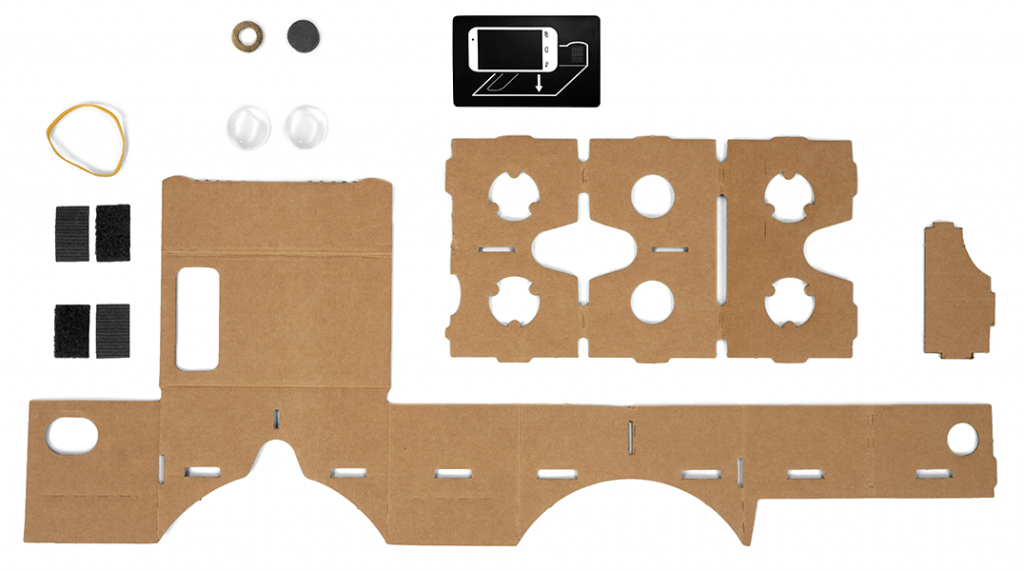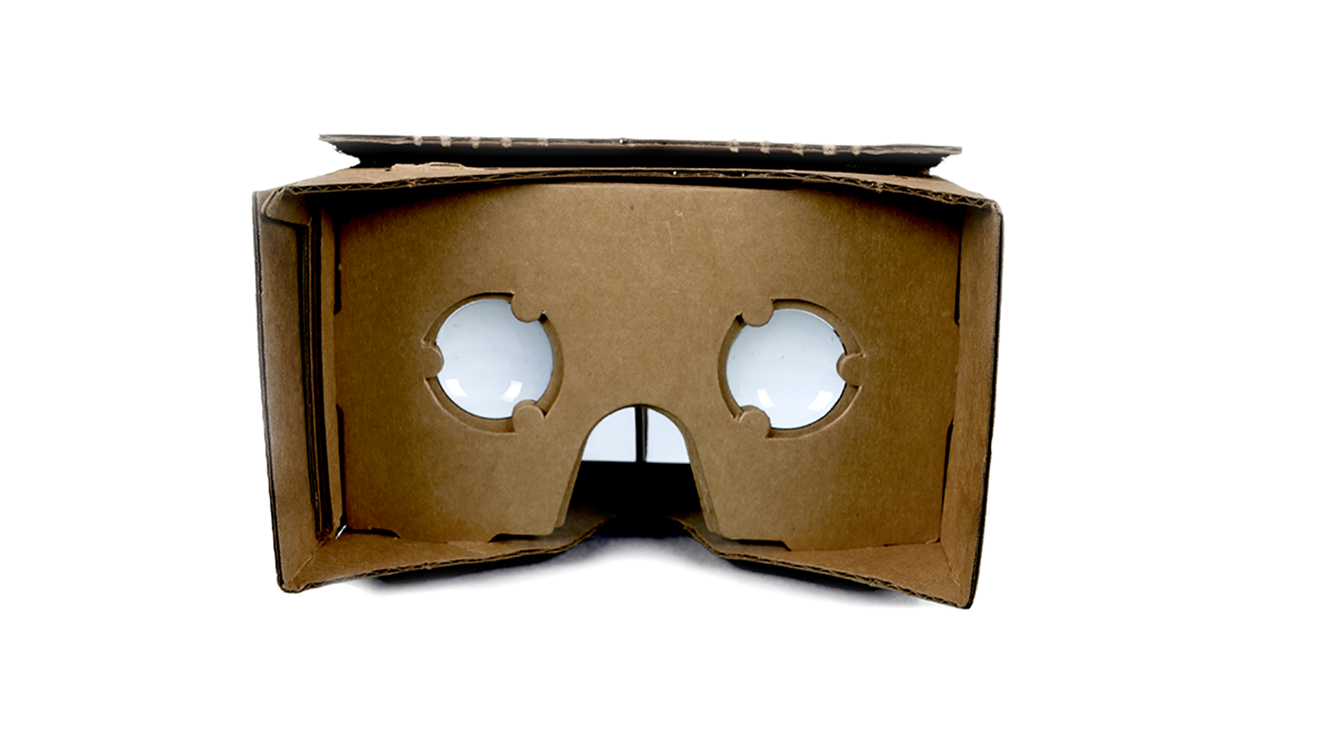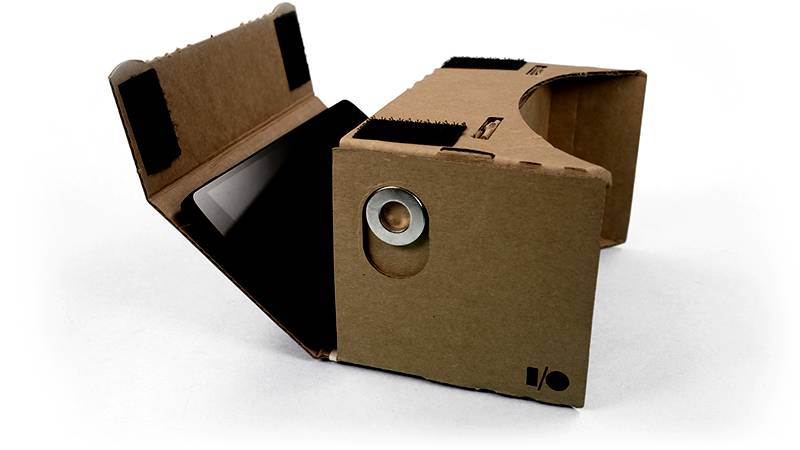There’s a lot going on in the virtual reality space lately.
The up-and-coming Oculus Rift VR headset was recently purchased by Facebook to the tune of $2 billion. And PlayStation 4 maker Sony announced their own VR headset, Project Morpheus, this year at GDC.
Everyone’s been waiting for the other big players in gadgets and video games to unveil their own, and while Microsoft MSFT +0.68% didn’t show anything at E3, Google GOOGL +2.31% revealed their own VR solution today at I/O 2014.
Google’s answer to VR? Cardboard.
Or, rather, a DIY cardboard headset equipped with cheap lenses into which you slide your smartphone. Simply download the Cardboard app and you’re ready to roll, all for a few bucks in materials.
Which is—let’s face it—about as weird an idea as anyone could dream up, but also sort of brilliant; a truly “open” solution to virtual reality that hearkens back to Google’s roots and commitment to open development. And one that sidesteps a lot of the challenges facing other VR gadgets by utilizing the ubiquitous smartphone.
The actual construction of the cardboard VR headset will probably deter many would-be virtual-reality-goers, but it really doesn’t look difficult at all for anyone with a knack for putting stuff together. Google has all the instructions here, and the materials you need are pretty basic:
Almost certainly kits and fully-assembled versions of this will be available for sale within…days? Hours? Soon, in any case. I suspect we’ll even see more expensive, less “disposable” iterations pop up. After all, this is sort of the point: What Google is doing with Cardboard is opening up the possibilities of VR to basically anyone.
They even have an experimental toolkit available so developers can start playing around with Android-based VR basically right now. You can read more about that, check out instructions, and more at the Cardboard website.
It’s all pretty ingenious. Facebook buys Oculus for $2 billion, Sony must have spent millions in development of the Morpheus headset, and Google says, “Hey check out this cardboard thing-a-muh-whatsit, it can turn your phone into a VR headset for pennies on the dollar.”
I haven’t tried to build one yet, though I think my Galaxy Note 3 would be both A) a great device for VR and B) probably require larger dimensions than the standard Cardboard design. But from what the internet tells me, the thing actually works remarkably well. Here’s Gizmodo’s Brent Rose:
You hold the box up to your face, and suddenly you’re looking at a horizontal row of applications. To scroll back and forth, you just turn your head. Oh and you see that little washer that’s held to the side? That’s how you click on things! You slide it down in its little cardboard slot and it pops back up. It feels like a old school view-finder.
I used it to look into the Pixar-like world of Windy Day, and it was incredibly immersive. Responsive, too. The gyroscopes in the phone worked very well, and as I turned my head, the world turned with me with no lag (that I was able to detect in the 30 seconds I was in there).
While this may not be the innovation that brings big, expansive, immersive worlds to virtual reality gaming, it may be the innovation that brings virtual reality gaming to consumers much more quickly than other solutions. The bar to development and distribution is supremely low.
While the major challenge facing Morpheus and Oculus is will be getting the device into consumers’ hands at a reasonable price, Cardboard will face no such obstacle. Simply getting the right screens has been one of the biggest hurdles for Oculus; but for Cardboard, the screens are already here. Consumers won’t have to buy them twice.
And while a consumer base is essential for development of a robust game catalog—the vicious circle of consumer base and content—development on Android of simple, casual VR applications and games will be cheap and low-risk.
If anything, however, Facebook and Sony should see Cardboard as a welcome addition to the field. A cheap, casual VR headset like this has the potential to introduce and entice consumers. Think of it as a gateway VR headset. If consumers enjoy the experience, maybe they’ll move on to the “hard stuff” later, buying into Oculus or Morpheus when those hit the market.
----------
If you liked this article, please subscribe to our YouTube Channel for tech news, reviews and video tutorials. You can also find us on Twitter, Instagram and Facebook.





